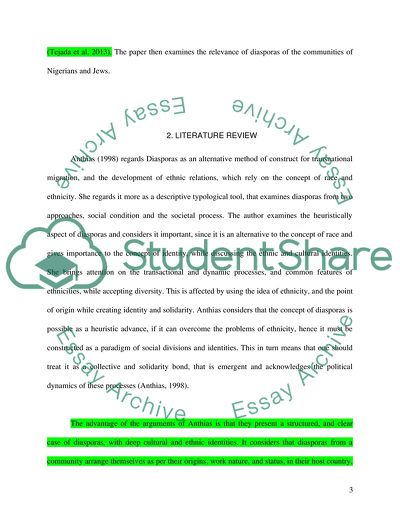Cite this document
(The Politics of Race and Diaspora Literature review Example | Topics and Well Written Essays - 1500 words, n.d.)
The Politics of Race and Diaspora Literature review Example | Topics and Well Written Essays - 1500 words. https://studentshare.org/sociology/1840391-the-politics-of-race-and-diaspora-critically-evaluate-the-analytical-use-of-the-term-diaspora-in-the-journal-articles-by-safran-and-anthias
The Politics of Race and Diaspora Literature review Example | Topics and Well Written Essays - 1500 words. https://studentshare.org/sociology/1840391-the-politics-of-race-and-diaspora-critically-evaluate-the-analytical-use-of-the-term-diaspora-in-the-journal-articles-by-safran-and-anthias
(The Politics of Race and Diaspora Literature Review Example | Topics and Well Written Essays - 1500 Words)
The Politics of Race and Diaspora Literature Review Example | Topics and Well Written Essays - 1500 Words. https://studentshare.org/sociology/1840391-the-politics-of-race-and-diaspora-critically-evaluate-the-analytical-use-of-the-term-diaspora-in-the-journal-articles-by-safran-and-anthias.
The Politics of Race and Diaspora Literature Review Example | Topics and Well Written Essays - 1500 Words. https://studentshare.org/sociology/1840391-the-politics-of-race-and-diaspora-critically-evaluate-the-analytical-use-of-the-term-diaspora-in-the-journal-articles-by-safran-and-anthias.
“The Politics of Race and Diaspora Literature Review Example | Topics and Well Written Essays - 1500 Words”. https://studentshare.org/sociology/1840391-the-politics-of-race-and-diaspora-critically-evaluate-the-analytical-use-of-the-term-diaspora-in-the-journal-articles-by-safran-and-anthias.


